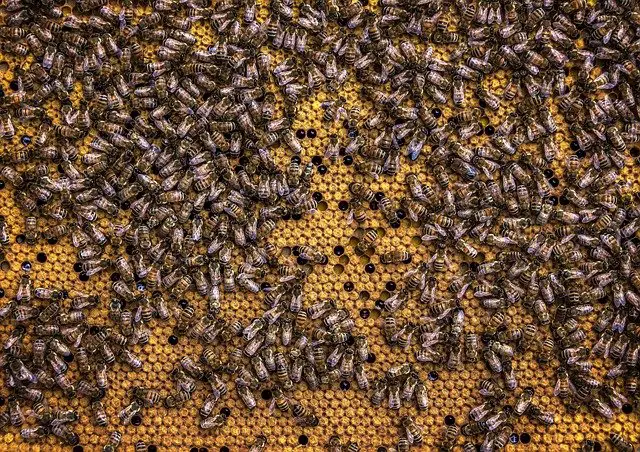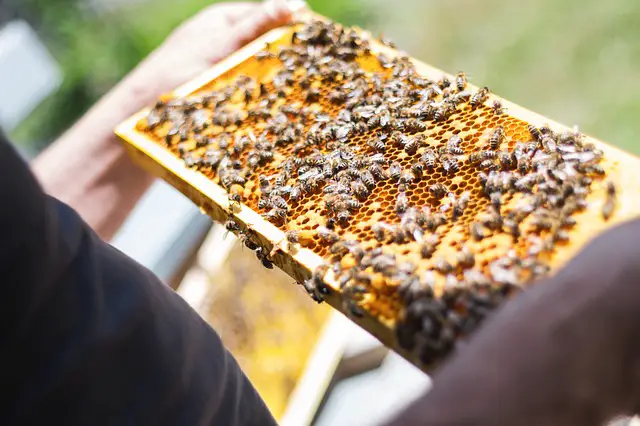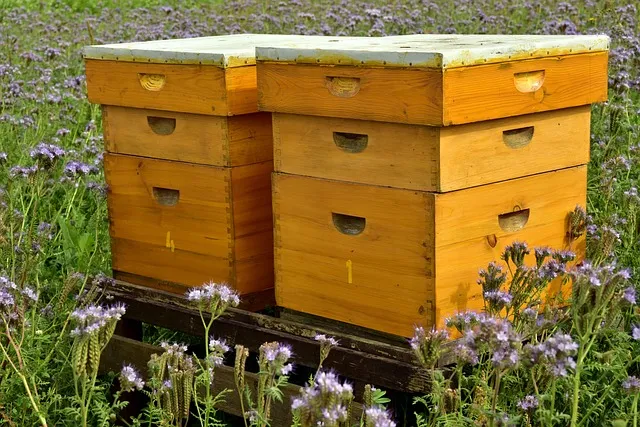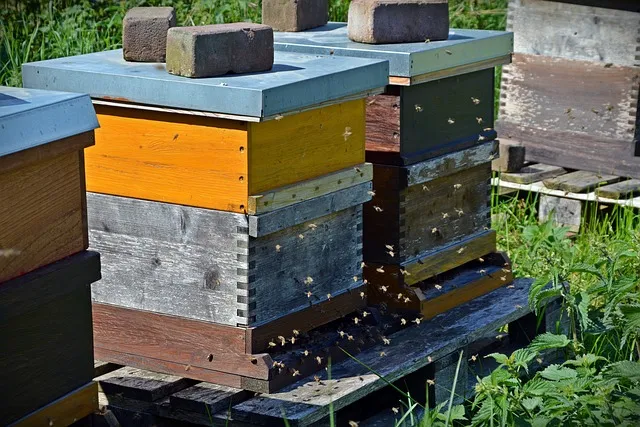How to Start Natural Beekeeping? Step By Step Guide
Beekeeping is an excellent hobby for anyone in rural, urban or suburban settings. In recent years there have been unusually high losses of honey bee colonies that are attributed partly to pesticides, herbicides, and other chemicals.
Natural beekeeping gives a beekeeper an opportunity to provide a home for the declining bee populations and enjoy unique products from these fascinating creatures. Advocates of natural beekeeping believe that bees are excellent at taking care of themselves through natural processes with minimal or no help from man.
Similar Articles you may like to read –
How much do honey bees cost? Where can I get Honey bees? Things to consider
Where to put the beehive? Bee Hive plan and Placement. Things to consider
What month should I buy bees?
What is the best bee for beginners?
What is natural beekeeping?
Natural beekeeping is a holistic approach to keeping bee colonies that aims at providing for the needs of the colony above the beekeeper. It emulates how bees live in the wild and still promotes practice of trained beekeepers. Instead of managing hives, you become a guardian of your bee colonies. In other words, you host bees in your yard, check them periodically, and add space to their hive to meet their needs. You only bother the bees for brief peeks in the hive and harvesting honey in spring and summer. The focus is to facilitate the health of bee colonies in your yard other than what bees can give you.
Principles of Natural Beekeeping
Natural Food
Nectar and pollen collected by bees and transformed into honey and beebread, respectively, is the only essential food for the bees. You should allow nature to take its course; if a colony is not strong enough to survive the cold season, do not prop it with sugar water.
No Chemicals
No chemical treatment for pests and diseases. Colonies that are naturally resistant to the mites will survive. The use of chemicals can have a detrimental effect on the colony.
Natural Reproduction
Allow bees to swarm; it is their natural way of reproduction.
Minimal Intervention
Opening the hives for inspection should be done minimally, gently, and swiftly during warm, sunny weather. Only harvest honey in spring and summer and not in fall since they need the honey reserves in winter.
Natural Comb
In natural beekeeping, bees are allowed to build their comb as they would in the wild. This keeps plastic and contaminated wax-coated foundation out of the hive and allows the bees to build the comb with natural cell size. The natural size cell improves their ability to fight varroa mites.
You may also like to read –
Bee Pollen Nutrition Facts
What does a bee sting look like in the skin? How to remove it?
What Does a Bee Sting Look Like the Next Day?
How far do honey bees travel from the hive?
How to Start Natural Beekeeping

Know the Laws
In many states, there are some regulations that regulate beekeeping. You may need to register your hives or get a permit. On top of the laws, ensure your neighbors are comfortable with your keeping bees in the community, especially in an urban setup.
Learn About Beekeeping
To succeed in natural beekeeping, you will need to learn. Some of the best resources include books, online resources, and videos. You can also consider joining a beekeeping association to learn more about the venture. Most beekeeping associations have the information you require to start.
Initial Cost
You will need some monetary resources to get your colony up and running. The initial cost will depend on the number of colonies, how you obtain the bees, and the model of the hive you choose. You don’t require sugar, pollen patties, or mite treatments in natural beekeeping.
Get Your Beekeeping Supplies
Beehive
There are many hive configurations used by beekeepers, including Langstroth, Warre, Dandant, and topbar hives. The top bar hive is ideal for natural beekeepers since it closely models the natural way that bees build a colony in the world. Instead of the stacking boxes like other hive models, the top bar hive consists of horizontal bars that the bees fill from right to left across the hive as the colony grows. Each bar can be removed individually for inspection or during harvesting. A bar full of honey weighs about seven pounds, making it more accessible even to children. Making a top bar hive with hand tools and basic woodworking skills is also easy. Langstroth hive can also be modified to incorporate natural beekeeping principles.
Smoker
Natural beekeepers rarely use smoke since it is stressful for bees. However, it is a handy tool if the bees become agitated when you are harvesting or carrying out an inspection.
Bee Brush
A Bee brush helps you remove the bees from the bars and comb, especially when you are harvesting honey.
Hive Tool
Honey bees glue everything in the hive together with propolis. A hive tool will help you pry the hive’s bars during inspection or when harvesting. In a natural hive, the honey bees build comb against the hive’s walls. To remove the bars, you need to cut the excess comb from the side of the hive to avoid tearing and damaging the comb on the bar. A hive tool has a flat edge for cutting and prying.
Here is the list of protective gear that you require
Bee Suit
A new beekeeper will feel more comfortable around the bees with a full suit. It covers from the crown of the head to the ankles. It also has gathers at the neck, ankles, and wrist to bar the bees from gaining access.
Beekeeping Jacket
It is an excellent option for a full-body suit. They usually have a veil integrated into their design.
Gloves
Gloves protect your hands from bee stings. Most experienced beekeepers don’t use gloves.
Cap and Veil
A cap and veil protect your head, face, and neck from being stung.
Make a Bee-Friendly Garden
You should have plants in your garden that bees enjoy. Although bees will forage within a radius of 3-5 miles, you can play your role excellently by practising organic gardening on your property. Bees require good quality and a diverse range of food to survive. You can plant organic seeds and bulbs before acquiring the bees to help the bees thrive. Some of the flowers that bees love include white clover and dandelions. Here is how to make your garden bee-friendly.
- Avoid using herbicides, pesticides, and other chemicals in the garden
- Include fruit trees
- Allow your plants to flower
- Choose plants with long blooming cycles
- Consider plants that bloom in different seasons
- Choose plants that are attractive to the bees
- Avoid plants with numerous petals
Get an Ideal Place for the Hive
Here are the factors to consider when choosing a good place for your colonies:
Serenity
Choose a place with minimal disturbance and low traffic. When leaving the hive and coming back, the forager bees will require a clear flight path. Avoid high activity spots such as near playgrounds, sidewalks, or construction sites.
Wind Protection
Choose a place that is protected from strong winds. Harsh winds make it hard for the bees to regulate the hive’s temperature.
A Supply of Water
Ensure that bees have access to a clean water source, especially in the hot months. They not only forage for water and nectar but also for water. Surprisingly, the bees drink about three times their body weight per day.
Security
Choose a place where your bee colonies will be protected from predators, intruders, and thieves.
A partial shade
Consider a place that will provide a partial shade for the bees from extreme heat in summer. Full direct sunlight the whole day makes the hive extremely hot, and the bees spend most of their time cooling the hive.
Positioning the Hive
While the bees can live in almost any location, it is advisable to face the hive entrance toward the rising sun (east or south). The morning sun on the hive warms the hives and the bees.
Get a Bee Colony
Here are ways of getting a bee colony:
Catching a Swarm
You can catch a swarm and introduce it to your empty hive. You can also of getting set a swarm trap to catch the bees. While many may see it as a hard task, catching or luring a swarm is fun and easy. Beekeepers entice a passing swarm by using some drops of citronella, lemon grass oil, or rubbing the inside of the hive with pure beeswax. Swarming is a natural way of reproduction by honey bees, mostly in late spring and early summer.
Buying a Bee Package
A bee colony comprises thousands of worker bees, a queen in a cage, and a handful of drones. They are ordered in pounds; one pound contains 3500 bees. Most natural beekeepers prefer locally-sourced bees since they are accustomed to the environment.
A Nuc Hive
It comprises of few frames of brood and honey, a queen bee, and several thousand worker bees. The brood minimizes the time that the colony takes to get new bees. Honey provides food for the bees before they start collecting nectar and pollen.
More articles you may like to read –
How much money is a queen bee worth?
What is the best color for bee boxes?
Are honey bees high maintenance?
Is beekeeping expensive to start? / cost to start beekeeping
Carrying Out Hive Inspections

While conventional beekeepers teach how to inspect a hive by pulling frames one by one, natural beekeeping calls for minimal disturbance of a bee colony. You can gather a lot of information through external observations without opening a hive. Here are some of the places you can observe:
Entrance
Observing the entrance lets you learn about the bees’ temperament, population, robbing tendencies, etc.
Hive Floor
Some hives are equipped with a slide-out floor designed to examine what is falling from the combs above. The Presence of feces indicates pests since bees don’t defecate in their hive. Wax capping derived from uncapping honey can tell if the colony is feeding on honey reserves prematurely.
Windows
Most natural beekeepers invest in windows to monitor how a colony builds up and know when the combs are fully capped to harvest.
Honey Harvesting
You can harvest honey with beeswax comb intact. Alternatively, you can use an uncapping knife to cut the caps from the comb and remove the honey. Extracting the honey and returning the combs to the hive is economical for the bees since they ingest about 6 pounds of honey to make 1 pound of wax. In natural beekeeping, you should ensure that the bee colonies have enough honey stores at all times. In your first year, it is good to leave most of the honey for the bees.
FAQs
What is the importance of natural beekeeping?
Natural beekeeping is less time-consuming and inexpensive. Secondly, it promotes a healthy and resilient bee population able to withstand hazards, pathogens, and forage fluctuations using their immune and behavioral responses. It also prevents health consequences for bees and people who consume honey. Fungicides, pesticides, and antibiotics placed in the hives are incorporated into the honey to some degree and feed human beings. They compromise the purity of honey.
What is the best hive arrangement for natural beekeeping?
A horizontal hive configuration favors natural beekeeping more than the other arrangements. It consists of one long box with all the frames stationed at one level. A beekeeper can access all the frames at once with minimal disturbance to the bees and does not require heavy lifting. Horizontal hives also require minimal experience from a beekeeper. Again, the whole volume of the hive is accessible to the bees at any time, and they can expand at their own rate.
You can learn more about the ” Do Bees Have Lungs? How do honey bees breathe? ” in our article.


